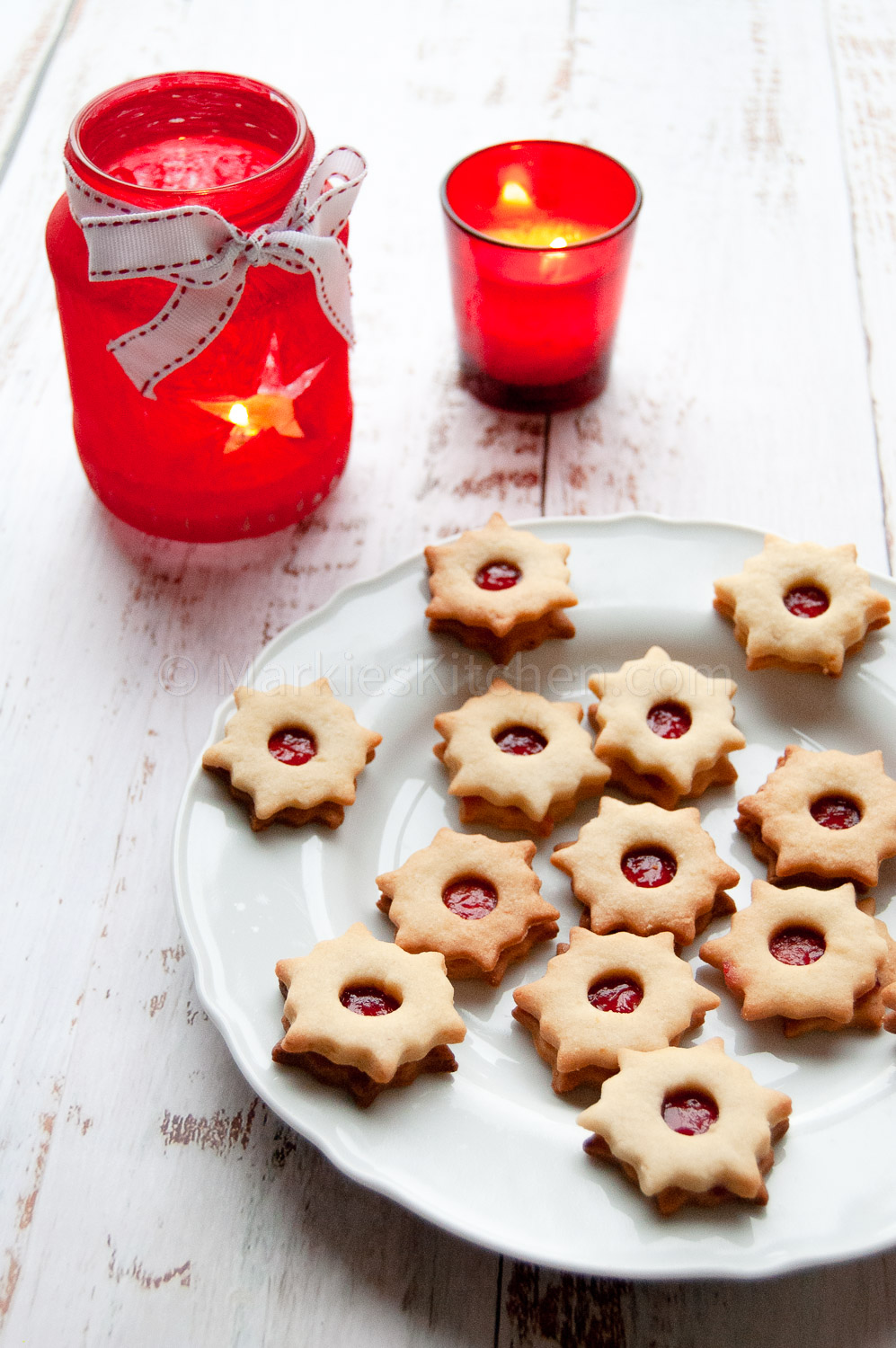
It's 10 days until Christmas and I'm here with another festive recipe: Linzer cookies!
Linzer cookies are typically two blonde shortbread cookies that hold together like a sandwich - thanks to a jam filling, which shines through a tiny hole in the top part of the cookie.
As the name suggests, these cookies have their origin in the Austrian town called Linz.
They have become very popular in many countries across Central Europe (including the Czech Republic), and are a must-have during the Christmas period.
However, people also make them for other special occasions, such as weddings, Easter and other celebrations.
They aren't only a delicious snack, but also make a great hand-made gift!
The recipe below is one that my mum flawlessly follows every year, and that's why it has been my go-to as well.

How to make Linzer cookies?
The dough for Linzer cookies is very similar to the one of shortbread pastry. It is easy to make and contains only a few ingredients.
Before I start telling you details about the recipe, I'd like to mention that you may find various versions of it on the internet and in cookbooks. Some using almond flour and/or adding different spices, even cocoa, but I only use lemon zest and sugar.
I prefer to use a baking block (baking vegetable fat) in this recipe, as it makes the cookies a little bit lighter than if they were made of butter. The vegetable/plant-based fat also makes them last slightly longer. If you would like to use butter instead, go ahead!
Ideally, the dough should rest overnight in the fridge before baking.
Therefore it's good if you plan things out, to make it easier for yourself:
- On day 1, make the pastry, leave it to rest.
- On day 2 you can start baking.
- And on day 3, you can decorate your cookies with jam, and later with chocolate or another type of icing (the chocolate is optional).
Linzer cookies are famous for their red centers - the jam (or preserve) filling. Feel free to use any jam you like here! Apricot, blackcurrant, or blueberry will look just as stunning!

However long the process sounds, trust me, these sweet little wonders are absolutely worth all your time & will be later appreciated by all of your loved ones!
Plus, kids can have fun when they help to cut them!
Lastly, the recipe is using egg yolks only. Save the egg whites for later in a cup in the fridge for up to a day. Stir them into spaghetti carbonara or make an omelette!
What to look out for when making them?
The dough needs to be sticky but not too crumbly. Try not to add any more flour, as it may start to crumble and it will be hard to roll later. If it seems too dry and is difficult to roll, knead a spoonful of water or milk into it. Alternatively, stick it back in the fridge to chill for 10mins.
Remember to roll the dough out evenly, so that its thickness is everywhere the same. If it's too thin or uneven, simply scrap the dough up with your hands, knead it and start rolling it again until you're satisfied with the result.
It's handy to have some cookie cutters for cutting Linzer cookies (often available in shops around Christmas), however, if you couldn't get hold of any, then simply use a narrow upside-down glass or a small cup with sharper edges. Use a butter knife or a metal straw to cut out the little centre holes in the top parts.
When cutting out these cookies, make sure they are roughly of the same size, so that they bake evenly in the oven.
Also, it is better to bake the bottoms and tops separately, as the tops (if having a small cut out hole in the centre of them) tend to bake much quicker than the bottoms. Baking them together would result in overbaking one and underbaking the other.
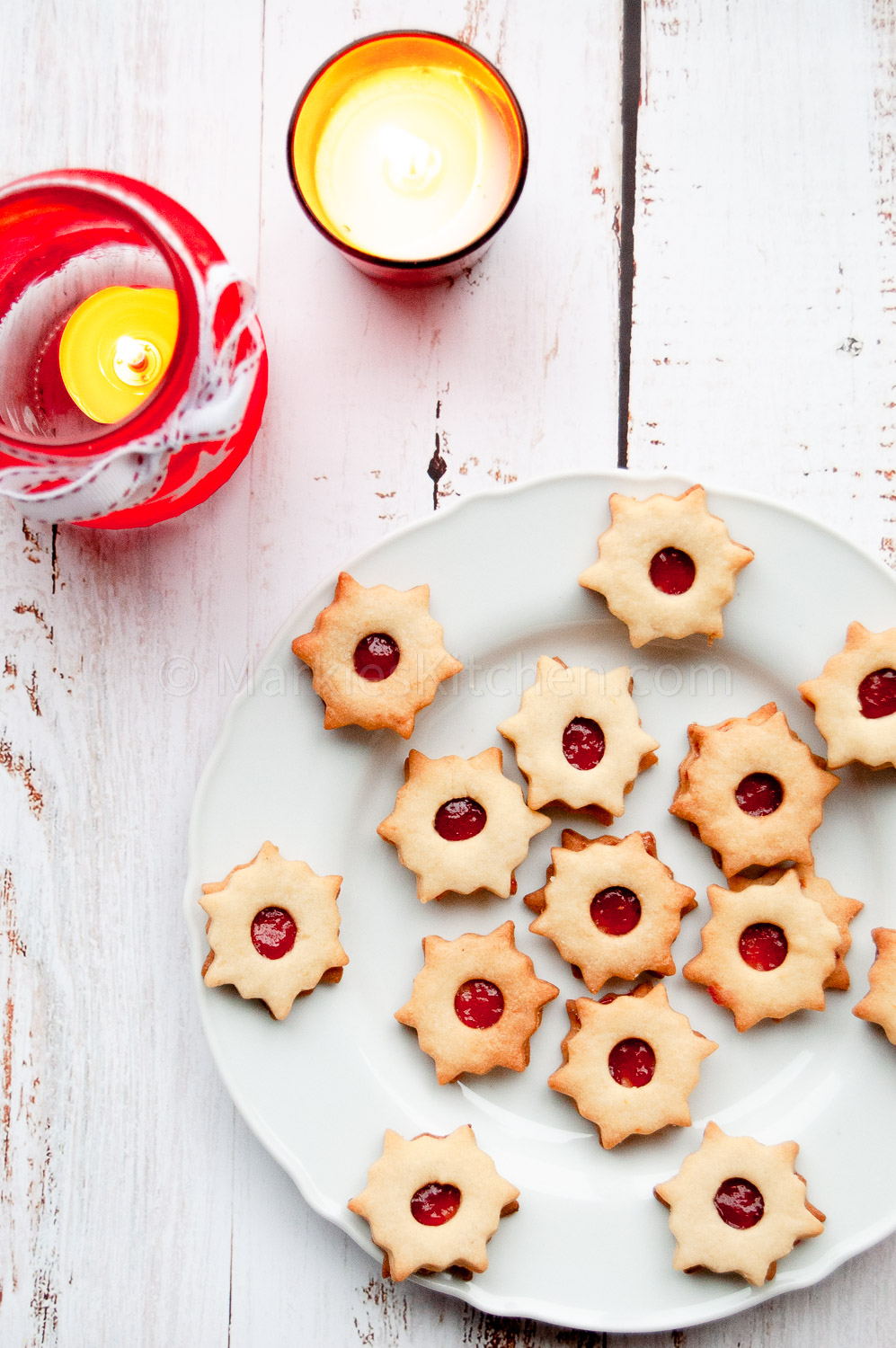
The baking times I give are recommended based on what works best in my oven. Adjust the timing according to experience with your own oven - and remember to keep an eye on the cookies when they are in the oven.
Take them out earlier if they seem golden on top and leave them there for a minute or two longer if they look too pale.
Leave them to cool down on a cooling rack. Feel free to decorate them right after they have cooled down or in the next few days.
Linzer cookies with jam inside look beautiful without any icing - just slightly dust them with icing sugar before serving.
How to keep them?
Once your cookies are done, store them in an airtight container or a paper box on a layer of greaseproof paper - make sure you don't skip this step, as the fat will otherwise go through the bottom of the paper box and might stain your furniture. I like to use old (clean and empty) shoeboxes for this purpose.
Cookies stored like this will stay fresh for up to a month. They will soften a little over time.
Linzer cookies can also be kept frozen. Decorate them, leave to cool down and then store in an airtight container in your freezer, where they'll stay fresh for several months. Defrost them fully prior to serving.
The cookies make an awesome snack, but also are a perfect hand-made gift for the people you care about! Pack them in a jar decorated with a festive ribbon or put them in a small paper gift bag. Add a personalised message and give it to someone you love!
Made this recipe? Share your picture on Instagram and tag @markieskitchencom & use the hashtag #markieskitchencom so I can see it!
📖 The Recipe

Linzer Cookies
Ingredients
- 480 g plain flour, plus some for dusting
- 320 g baking block (fat) or unsalted butter, cut into dices and softened (room temperature)
- 140 g icing sugar
- 4 free range egg yolks
- 1 lemon, zested
For decoration:
- ½ jar strawberry jam
- icing sugar, for serving
Instructions
- Take the butter (or baking block) out of the fridge at least 30 mins before making the dough, cut into dices and set aside.
- In a large mixing bowl, mix together flour, sugar and lemon zest.
- Stir in the egg yolks and toss thouroughly.
- Gradually add the butter (baking fat) and mix it together with your hands. A sticky and breadcrumby dough will be forming under your hands. Keep adding butter until you used it all.
- Dust the work surface with some plain flour, take out the dough and knead it for 5-10mins or until it's completely smooth and you don't see any buttery bits in it (so that it's fully absorbed).
- Form a nice loaf of it, place it on a plate, cover with a cling film and leave to rest overnight in the fridge.
The next day (or after some resting time):
- Take the dough out 30 mins before baking.
- Preheat the oven to 210C/190C fan.
- Prepare your baking trays (3 is ideal) and lay down a sheet of baking paper in each of them.
- Dust the work surface and a rolling pin with some flour.
- Take half of the dough and start rolling it evenly to all sides, so that it is of the same thickness. Ideally, it should be 2-3mm thick.
- Using a cookie cutter (or upside down cup/glass with a sharper edge), cut out shapes from the rolled dough and transfer them onto the baking trays. Leave at least 1cm gap from each side between them.
- Scrape up any remaining bits from the cut-out dough, form a small ball and roll it out again. Use more flour for dusting if needed. Gradually keep adding the other half of the dough.
- When you have a full baking tray of cut out cookies and your oven is hot and ready, put it in the oven for 7-9 minutes or until golden.
- Take out, place on a cooling rack.
- Repeat steps 5-9 until you used up all of the pastry.
Decorating Linzer Cookies:
- Divide the baked cookies into two parts: bottoms and tops. Create pairs (one and one of each).
- Spread a small amount of the jam on the bottom part and stick on the top part. Repeat with all cookies. Leave to set for a couple of hours. Dust with icing sugar before serving.
Storage:
- Keep the cookies in an airtight container or a paper box, nested on a baking/greaseproof paper. They will stay fresh for about a month (or longer if you don't eat them all before!).














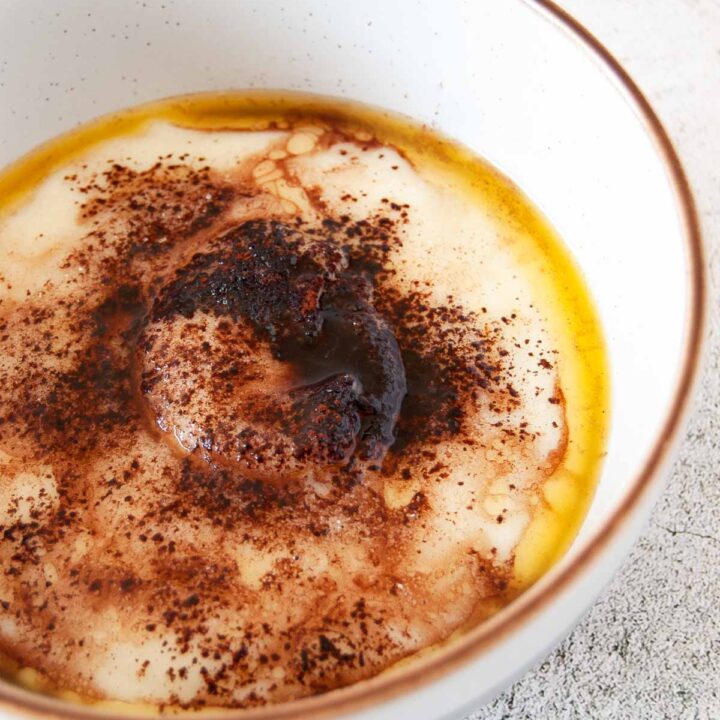

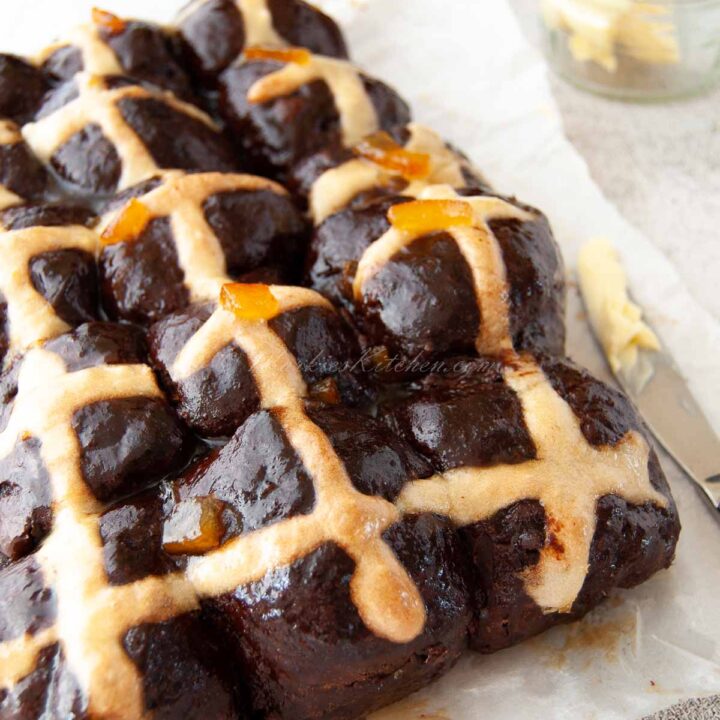
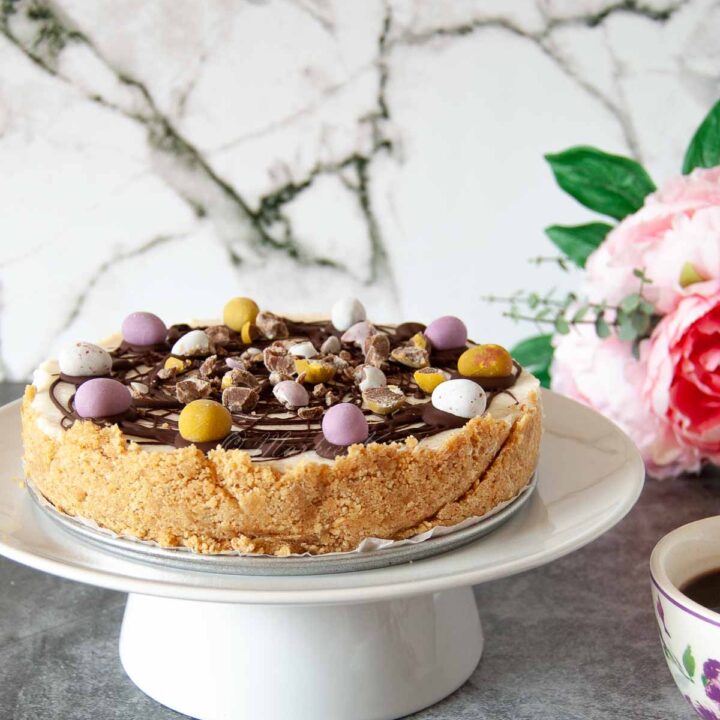
Share Your Thoughts